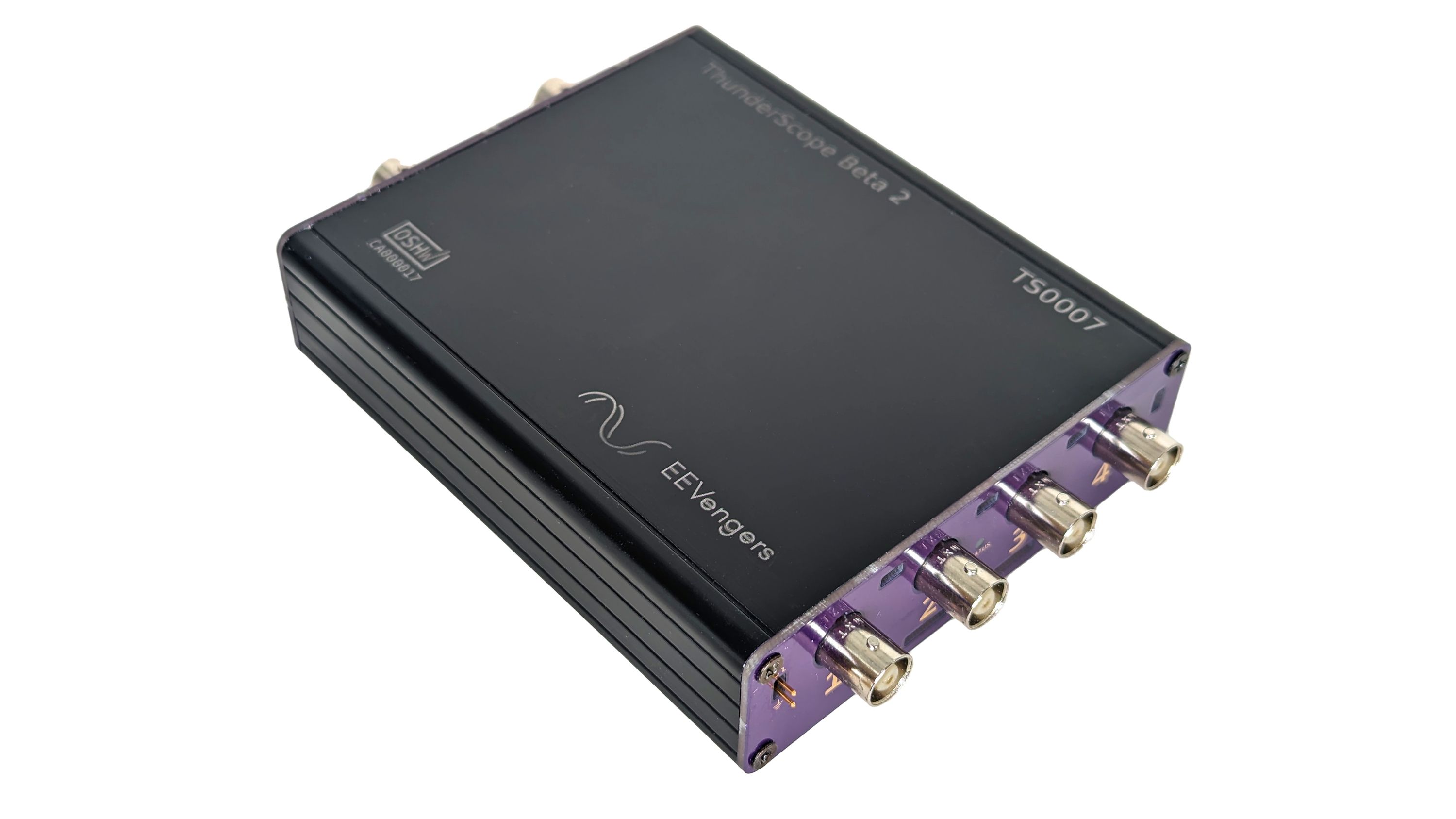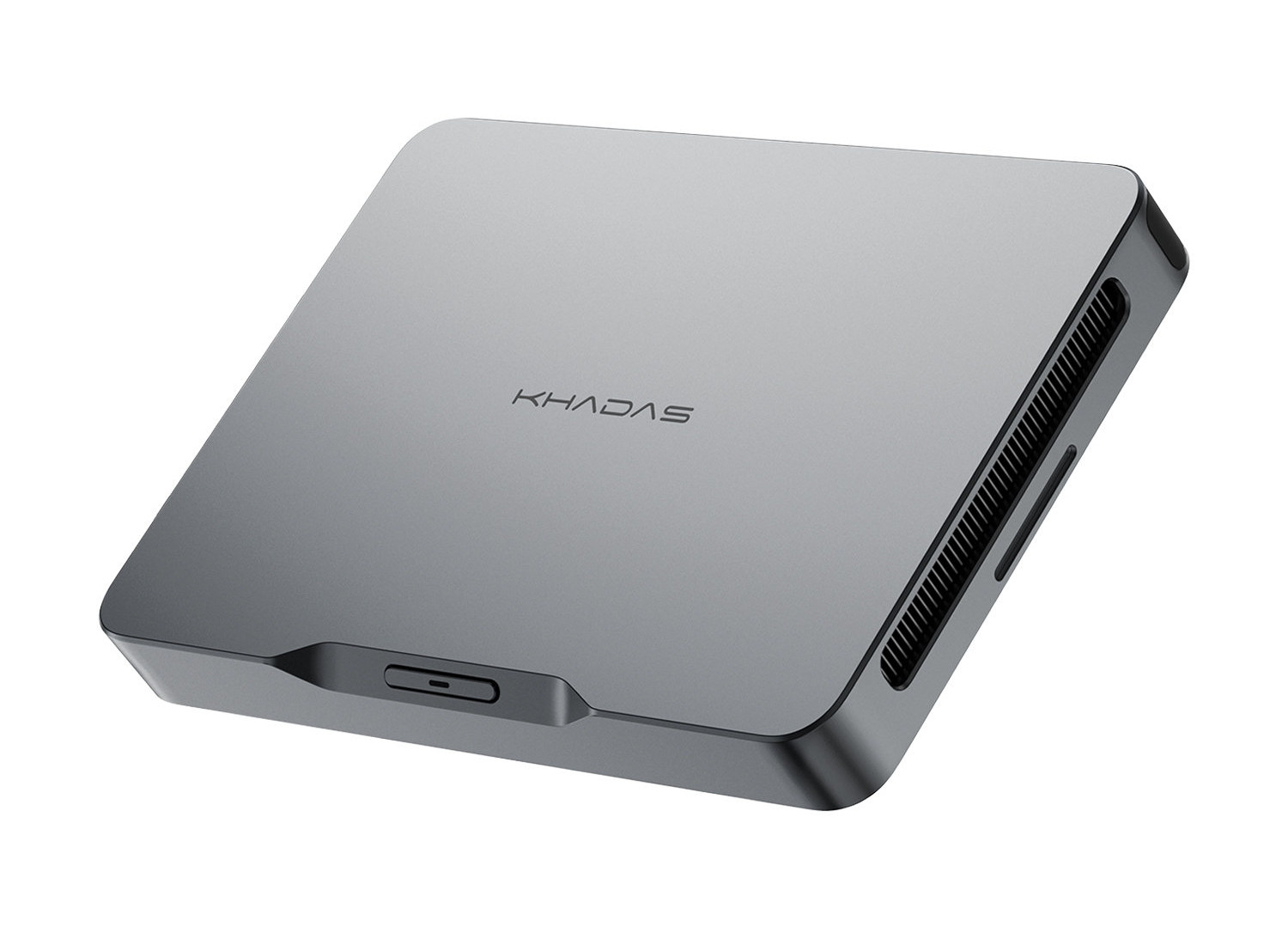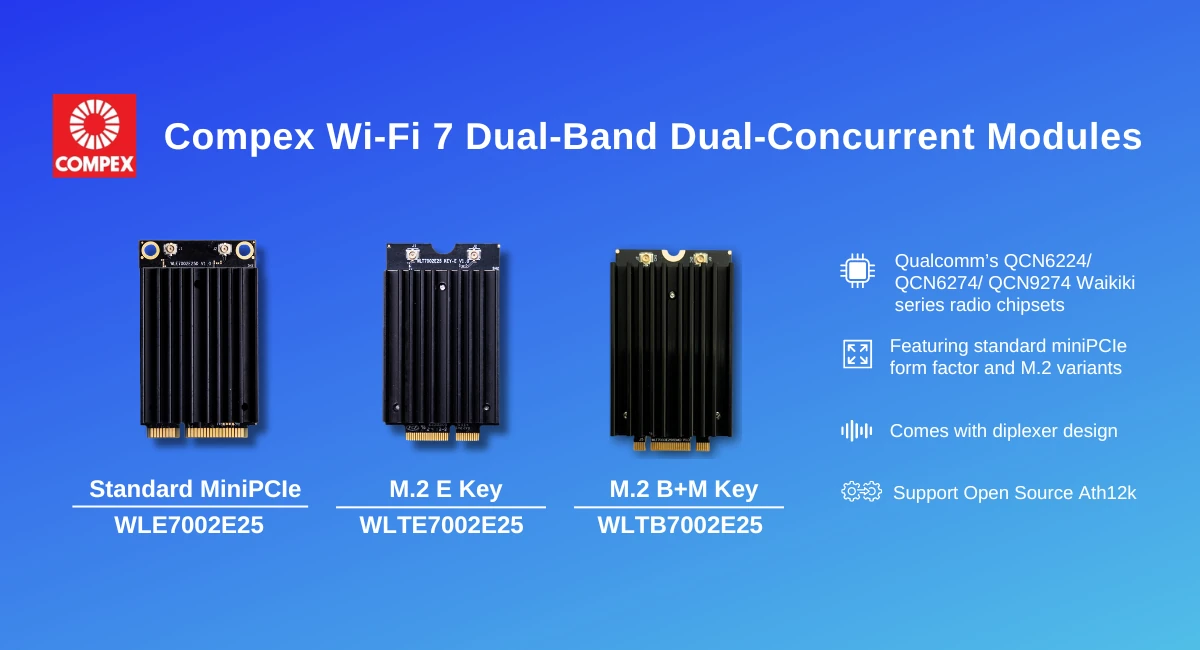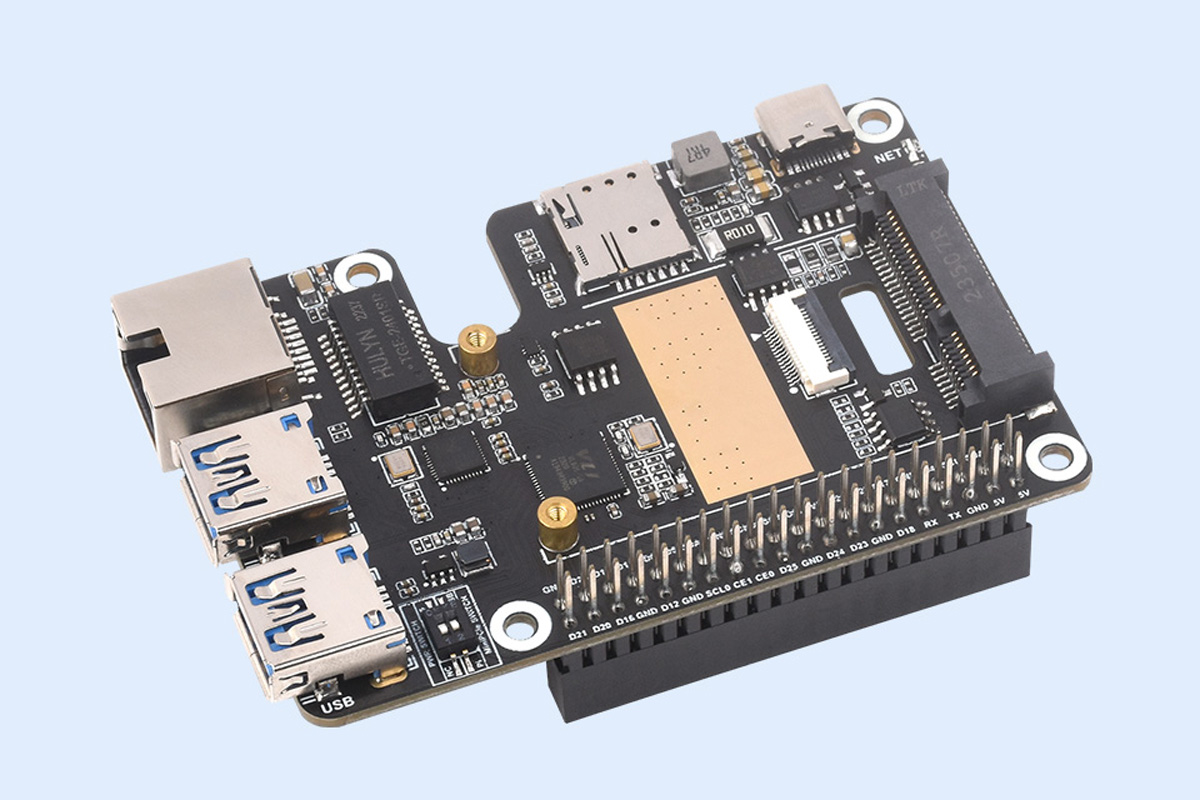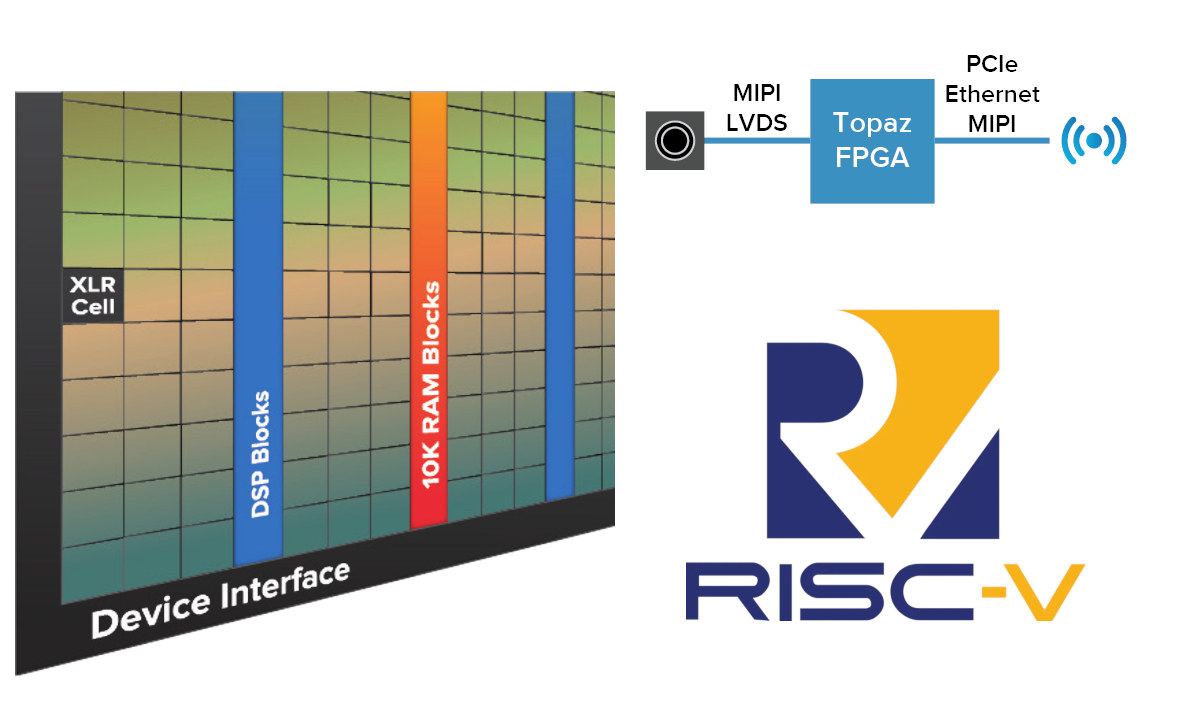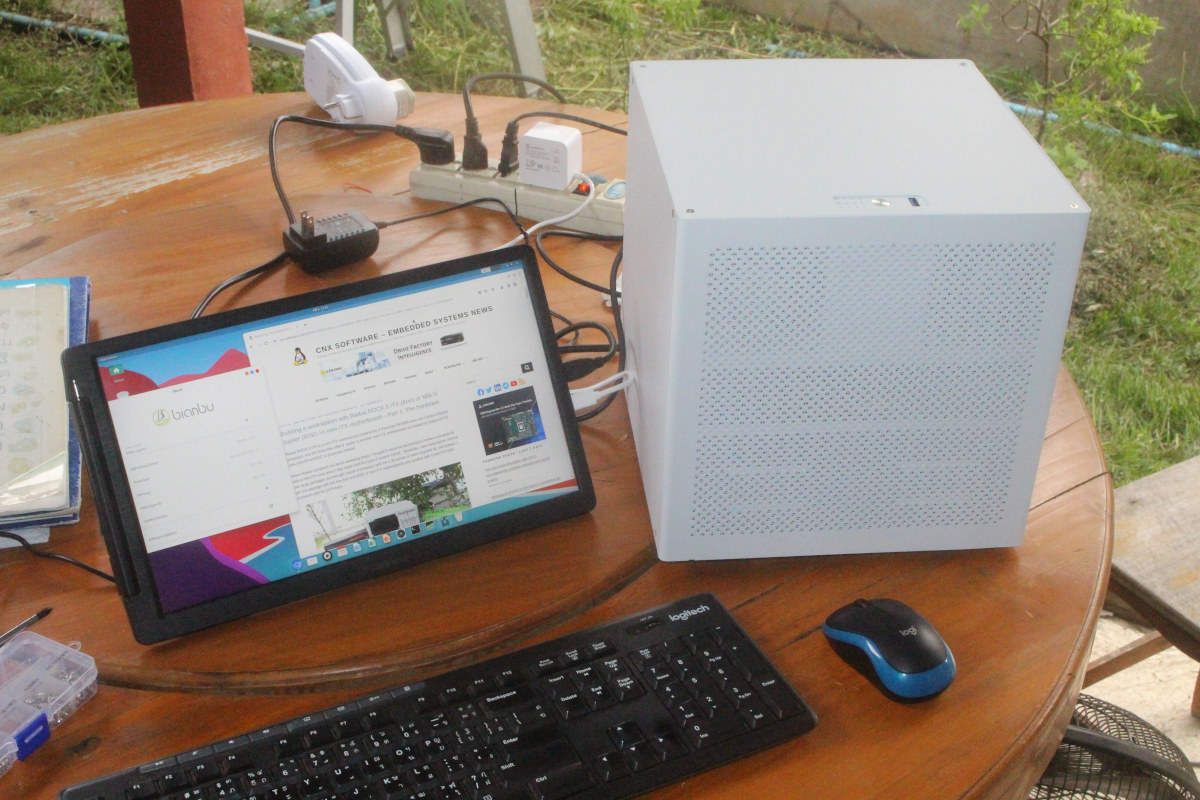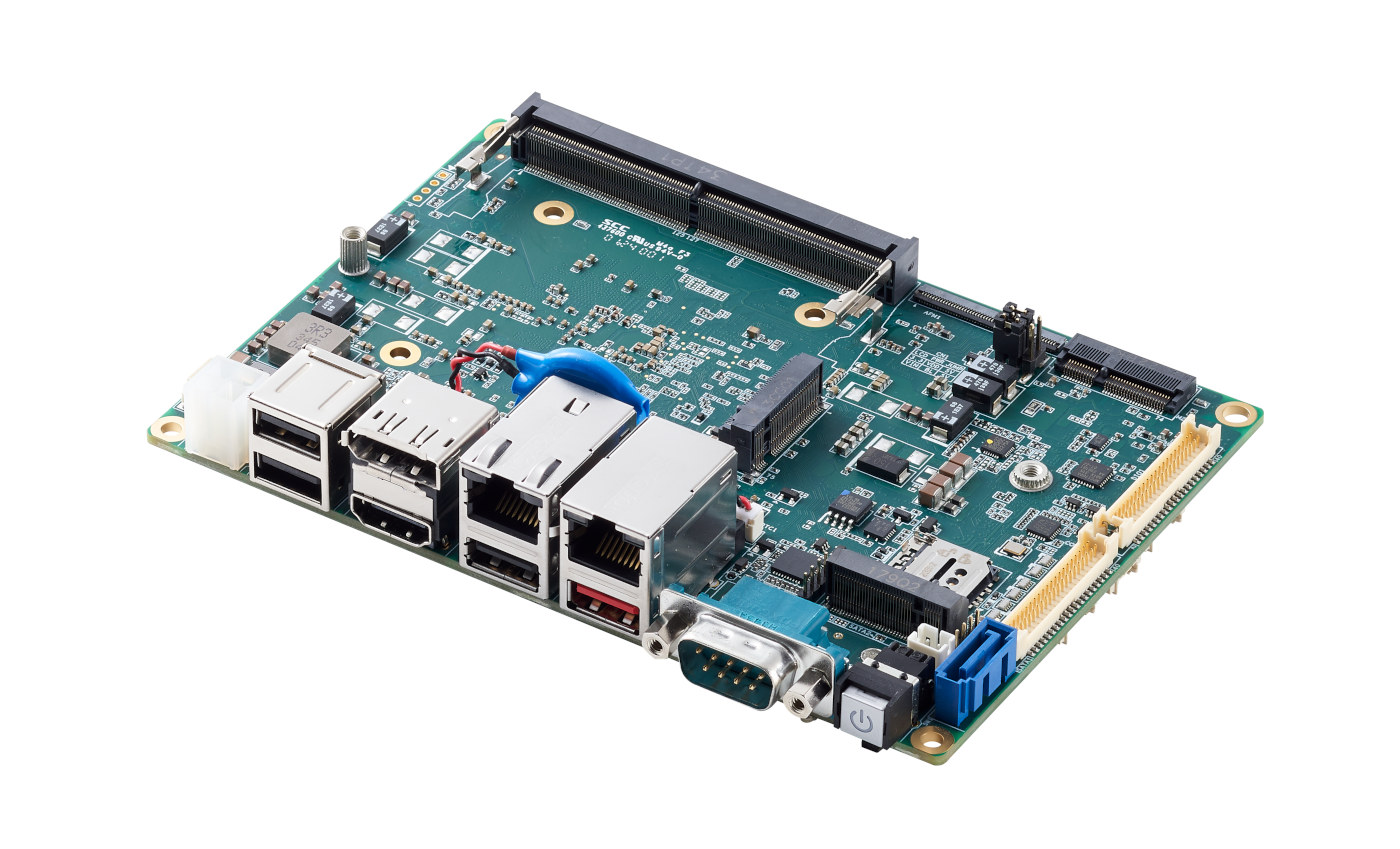The ThunderScope is an open-source, Thunderbolt/USB4 and PCIe oscilloscope with a sampling rate of up to 1 GS/s. It is portable, presents an affordable, open-source alternative to expensive bench-top and PC-based scopes, and delivers a higher sampling rate than most USB oscilloscopes. ThunderScope streams sample data to your computer for processing and analysis, unlike traditional oscilloscopes which “are limited by their built-in processing capabilities and cramped user interfaces.” It uses the fastest available interface, Thunderbolt, to stream data, allowing it to use your computer’s full potential. ThunderScope is “the only scope that will get better every time you upgrade your computer.” The Thunderbolt oscilloscope is based on AMD’s Artix 7 XC7A35T-2CSG325C FPGA. It supports up to four channels and a full analog bandwidth of 500 MHz (with the anti-aliasing filter disabled). It doesn’t require an external power source, as it is powered via the Thunderbolt port. It comes in a […]
Khadas Mind 2 portable mini PC gets Intel Core Ultra 5 125H or Ultra 7 155H update, USB4 and Thunderbolt 4 interfaces
Khadas Mind 2 is an update to the Raptor Lake-powered Khadas Mind portable mini PC offered with either an Intel Core Ultra 5 125H or Core Ultra 155H Meteor Lake processor. It ships with up to 64GB LPDDR5, PCIe 4.0 storage, and adds Thunderbolt 4 and USB4 interfaces that were missing from the first model. We reviewed the original Khadas Mind Premium with both Windows 11 and Ubuntu 22.04, and its dock, and it was indeed a pretty cool, albeit pricey, device with features like a small built-in battery to move the computer from one room to another without turning it off, and the Mind Link interface enabling connecting to the Khadas Dock for extra peripherals, the Mind Graphics for higher-end graphics, and more. Limitations included the lack of USB4 and 2.5GbE ports and the Khadas Link was limited to 64GT/s, but the second generation model addresses most of these […]
Compex unveils new Wi-Fi 7 dual-band dual-concurrent modules: WLE7002E25, WLTE7002E25 and WLTB7002E25 (Sponsored)
Compex Systems (Compex) announces the latest additions to its Wi-Fi 7 modules, WLE7002E25, WLTE7002E25, and WLTB7002E25, expanding its Wi-Fi 7 solution lineup. The updated lineup now includes M.2 variants to its popular dual-band Wi-Fi 7 modules. The new WLE7002E25, one of the first in the industry to feature a standard mini PCIe form factor, promises enhanced wireless performance and reliability at Wi-Fi 6 prices. The similar-sized WLTE7002E25 with an M.2 E Key and WLTB7002E25 with an M.2 B+M Key further broaden the versatility of Compex’s Wi-Fi 7 solutions. Powered by Qualcomm’s QCN6224, QCN6274, and QCN9274 Waikiki series radio chipsets, the new WLE/WLTE/WLTB7002E25 are dual-band dual-concurrent 2.4+5GHz Wi-Fi 7 (802.11be) modules, offering wider signal coverage by transmitting both bands concurrently, reducing latency with Multi-Link Operation (MLO) support, featuring OFDMA and 4096 QAMs. Delivering up to 20dBm per chain, these 2×2 MU-MIMO models are ideal for enterprise, industrial, cybersecurity, transportation, and SMB applications. […]
Vecow EVS-3000 AI computing systems combine 14th Gen Intel Core CPUs and MXM Graphics for Edge AI applications
Vecow has introduced the EVS-3000 series, a new line of AI computing systems powered by Intel Core i9/i7/i5/i3 (14th Gen) processors with embedded MXM graphics. These systems deliver high computing power, come with multiple PCIe slots for expansion, and support remote monitoring making them ideal for edge AI applications such as autonomous robotics, public security, and machine vision. The EVS-3000 series includes both fan and fanless models: EVS-3100, EVS-3200, EVS-3300, EVS-3400 without fans, and EVS-3100(F), EVS-3200(F), EVS-3300(F), EVS-3400(F) with fans. All systems are powered by Intel R680E chipsets and feature compact NVIDIA or AMD MXM graphics, with support for 2.5GbE LAN, Out-of-Band (OOB) management, and multiple PCIe Gen 4 slots. These systems deliver high performance for AI computing at the edge for applications such as machine vision and robotics. As you may know, we’ve previously covered several Vecow AI computing systems, including the TGS-1000 Series, SPC-9000 fanless embedded system, ECX-3200, […]
Raspberry Pi 5 PCIe HAT+ board features gigabit Ethernet, 4G LTE (mini PCIe), two USB 3.2 ports
Waveshare has recently introduced the PCIe to MiniPCIe GbE USB3.2 HAT+ for Raspberry Pi 5 adding gigabit Ethernet, a mini PCIe socket for 4G LTE, and two USB 3.2 Gen1 ports to the popular Arm single board computer. The HAT+ is compatible with IM7600G-H-PCIE/EG25-G-mPCIe series 4G LTE modules with 4G/3G/2G global band and GNSS positioning. Additionally, it has a gigabit Ethernet with an onboard RJ45 port, two USB 3.2 Gen1 ports, an onboard power monitoring chip, and EEPROM. All these features make this HAT useful for applications such as industrial routers, home gateways, set-top boxes, industrial laptops, industrial PDAs, and much more. We have previously written about many different types of HATs for the Raspberry Pi 5 designed by Waveshare including the Waveshare UPS HAT (E), the Waveshare PoE HAT (G), the Waveshare PCIe to USB 3.2 HAT+, and many other products. Feel free to check those out if you […]
Efinix introduces the low-power Topaz RISC-V SoC FPGA family for “high-volume, mass-market applications”
Efinix Topaz is a new low-power RISC-V SoC FPGA family manufactured with the same 16nm TSMC process as the Efinix Titanium SoC FPGA, but optimized for high-performance in a low-power footprint, and targetting high-volume, mass-market applications. The Topaz SoC FPGAs provide fewer features than the Titanium family but still offer up to four RISC-V hard cores, PCIe Gen3, MIPI interfaces, LPDDR4, LVDS, and 12.5 Gbps transmitter with most features being optional and depending on the exact SKUs selected. Efinix Topaz key features and specifications: FPGA compute fabric Up to 326,080 logic elements (LEs) Up to 19.22 Mbits embedded memory Up to 1,877 10-Kbit SRAM blocks Up to 1,008 embedded DSP blocks Memory – 10-kbit high-speed, embedded SRAM, configurable as single-port RAM, simple dual-port RAM, true dual-port RAM, or ROM FPGA interface blocks Optional 32-bit quad-core hardened RISC-V block (RISCV32I with M, A, C, F, and D extensions and six pipeline […]
MILK-V Jupiter review – A RISC-V mini-ITX motherboard and PC tested with Ubuntu-based Bianbu OS
In this review or preview of the the Shenzhen Milk-V Jupiter RISC-V mini-ITX motherboard, I’ll assemble the motherboard into a mini-ITX chassis, before installing the Ubuntu 23.10 Mantic-based Bianbu OS optimized for RISC-V platforms, and testing the device to see how much progress has been done on RISC-V since I tested the StarFive VisionFive 2 SBC with Debian 12 about 18 months ago. In the first part of the review, we checked out the Radxa ROCK 5 ITX (Rockchip RK3588 Arm) and Jupiter (SpacemIT K1 RISC-V) mini-ITX motherboards with specifications and unboxing, and the Auriga 6-Bay NAS mini-ITX chassis used in this review. I planned to start with the Radxa ROCK 5 ITX, but due to logistics and technical issues, I went ahead testing the RISC-V motherboard first. Installing Bianbu OS to the Jupiter RISC-V motherboard The board does not come with storage, so no operating system is installed. So […]
ADLINK SBC35-ALN 3.5-inch Intel N97 SBC features SBC-FM expansion connector with PCIe, USB, SMBus
ADLINK SBC35-ALN is a 3.5-inch Intel N97 SBC with up to 16GB DDR5, an M.2 socket for M.2 storage, and a custom SBC-FM expansion connector with PCIe Gen3 x1, USB 2.0, and SMBus interfaces. The 3.5-inch board also features two gigabit Ethernet ports, three display interfaces with HDMI, DisplayPort, and LVDS or eDP, several USB ports and RS232/RS422/RS485 serial interfaces, 40-pin box headers, and M.2 E-Key and B-Key sockets for wireless expansion. ADLINK SBC35-ALN specifications: SoC – Intel Processor N97 quad-core Alder Lake-N processor @ up to 3.6 GHz with 6MB Cache, Intel UHD Graphics; 12W TDP System Memory – Up to 16GB DDR5 4800 MHz via SODIMM slot Storage 1x SATA III + SATA power connector 256 Mbit SPI flash for BIOS Display 1x DisplayPort 1.4 1x HDMI 2.0 through DP to HDMI Redriver LVDS/eDP (default: LVDS) Supports 3 independent displays Audio Realtek ALC888S audio codec 1x Line-in, 1x […]


